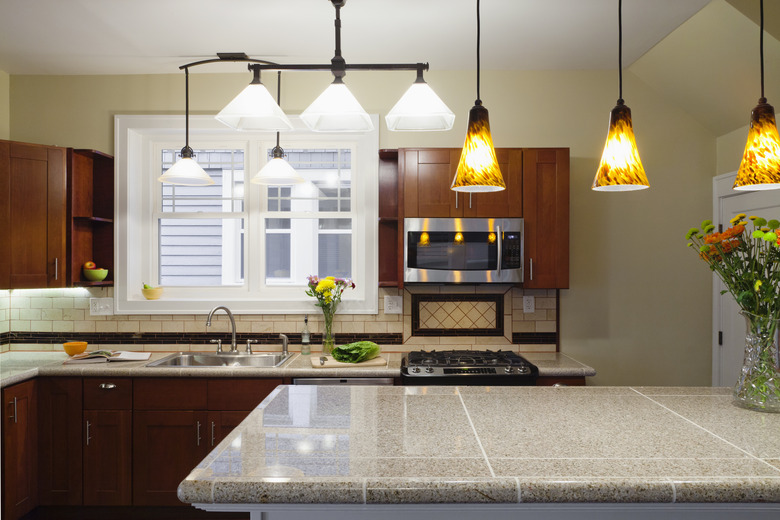How To Remove Burn Marks On A Countertop
Heat marks on laminate countertops, as well as wood, stone, faux stone and tile surfaces, can range from light scorching to severely darkened spots. As you might suspect, laminates are the most difficult materials to repair when burns occur because they aren't solid, and a hot object can actually burn a hole. On the other hand, you can remove burn marks from most other materials by sanding. Tile, though, is the exception, and tile is so hard that it seldom burns.
A common cause of burns is hot cookware on the countertop, and once you discover your mistake, the damage has been done. Deep holes in laminates are difficult to repair, but you probably don't have to cut out and replace the damaged section, as is sometimes advised. Usually, you have other alternatives, but you shouldn't discount this option altogether because it might be the best one for laminate countertop repair.
A General Treatment for a Burnt Countertop
A General Treatment for a Burnt Countertop
You need a different procedure to get deep burn marks out of wood, stone and faux stone than you would need for laminates. But for superficial discoloration, a general procedure works for most materials. You'll need a mild abrasive cleaner, such as white toothpaste or baking soda, and a soft rag. Avoid abrasive scrubbers because they can scratch the surface.
Start by cleaning the area around the burn with a mild detergent solution, such as a few drops of dish soap in a quart of water. Dry the area, then sprinkle or spread the cleaner over the burn mark and let it set for 30 minutes or so. Rub vigorously with the cloth, checking your progress as you go and adding more cleaner as necessary, then rinse with clean water when you're done.
Laminate Countertop Repair
Laminate Countertop Repair
If you aren't able to get the spot out of your laminate countertop, graduate to a tougher cleaner, such as kitchen scouring powder or Barkeeper's Friend. That won't completely remove the mark if the burn has penetrated the top layer of the laminate and made a hole, but it should remove most of the discoloration. After that, you can proceed in more than one way.
One strategy is to fill the hole with laminate repair paste, which you can buy at most home supply outlets. It comes in several colors, and you can mix colors to get a close match to the countertop. Spread the paste into the hole with a putty knife, wipe off excess while it's soft and give the paste several hours to harden.
You can also cut out and replace the affected part of the countertop. This is a job that requires some expertise, so it's best to hire a pro. Another option is to cover the hole with a cutting board or glue tiles over it to act as pot holders.
Repairing Solid Materials
Repairing Solid Materials
You can sand burn marks out of wood, stone and faux stone countertops. Removing burn marks from wooden kitchen worktops is easy: just put 120-grit sandpaper on a pad sander and go for it. But don't forget to clean up the scratch marks with 180-grit paper when you're done.
Sanding stone and faux stone requires a more delicate procedure. Use 180-grit or finer wet/dry sandpaper and sand by hand, not with a pad sander. It helps to lubricate the countertop with water to reduce the risk of scratches.
It's rare for a hot object to burn a hole in stone, but it can melt plastic and create a depression. You might want to fill the depression with epoxy resin when the mark is gone. If you do, sand the resin flat with 220-grit or finer sandpaper after it sets, then polish it.
